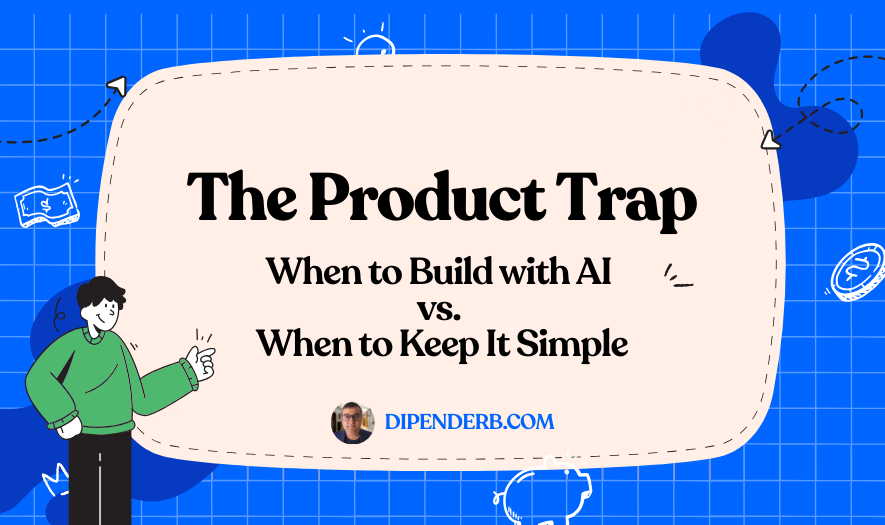The Product Trap: When to Build with AI vs. When to Keep It Simple
Every product cycle has its shiny object. Today it’s AI — specifically LLMs. Teams rush to bolt them onto everything: search, workflows, chatbots, dashboards. But here’s the trap: not every problem needs AI.
The best product leaders know this. They don’t start with the tech. They start with the problem.
The seduction of over-engineering
There’s a pattern I’ve seen in both startups and enterprises. A new technology comes along, and suddenly every roadmap has to “leverage” it. The result? Complex, brittle features that slow teams down and confuse users.
It’s the product version of using a sledgehammer to push in a thumbtack.
A better lens: input → output → scale
Instead of asking, “Can we add AI here?”, ask three simpler questions:
Input: What kind of data are we dealing with? Is it structured, predictable, or messy and ambiguous?
Output: What does the user actually need back? Precision? Explanation? A decision?
Scale: Does solving this with AI materially change speed, cost, or accessibility at scale?
Most of the time, simple rules, heuristics, or deterministic workflows solve the problem cleaner and faster. AI should only enter when the problem space is truly fuzzy — where rules break down, patterns are non-linear, or scale makes manual approaches impossible.
Simplicity compounds trust
Users don’t care if your feature runs on an LLM or a spreadsheet macro. They care if it works reliably, explains itself, and makes their life easier.
Over-engineering doesn’t just waste resources. It erodes trust. Products feel experimental instead of dependable.
The discipline is in restraint. The courage to say: this doesn’t need AI yet.
The takeaway
Good product management isn’t about chasing every new tool. It’s about matching the smallest, clearest solution to the problem at hand.
Sometimes that’s AI.
Often, it’s not.


